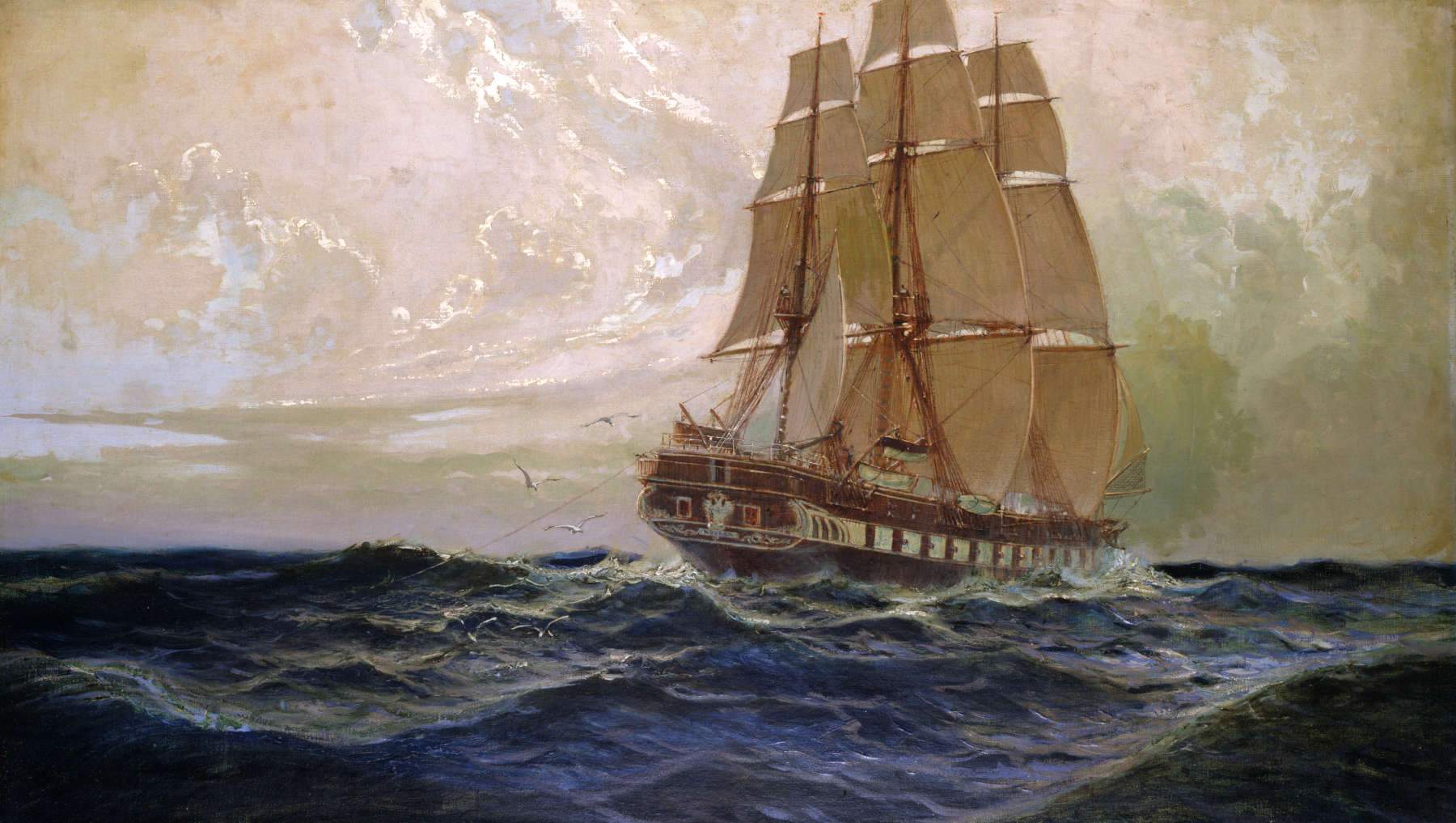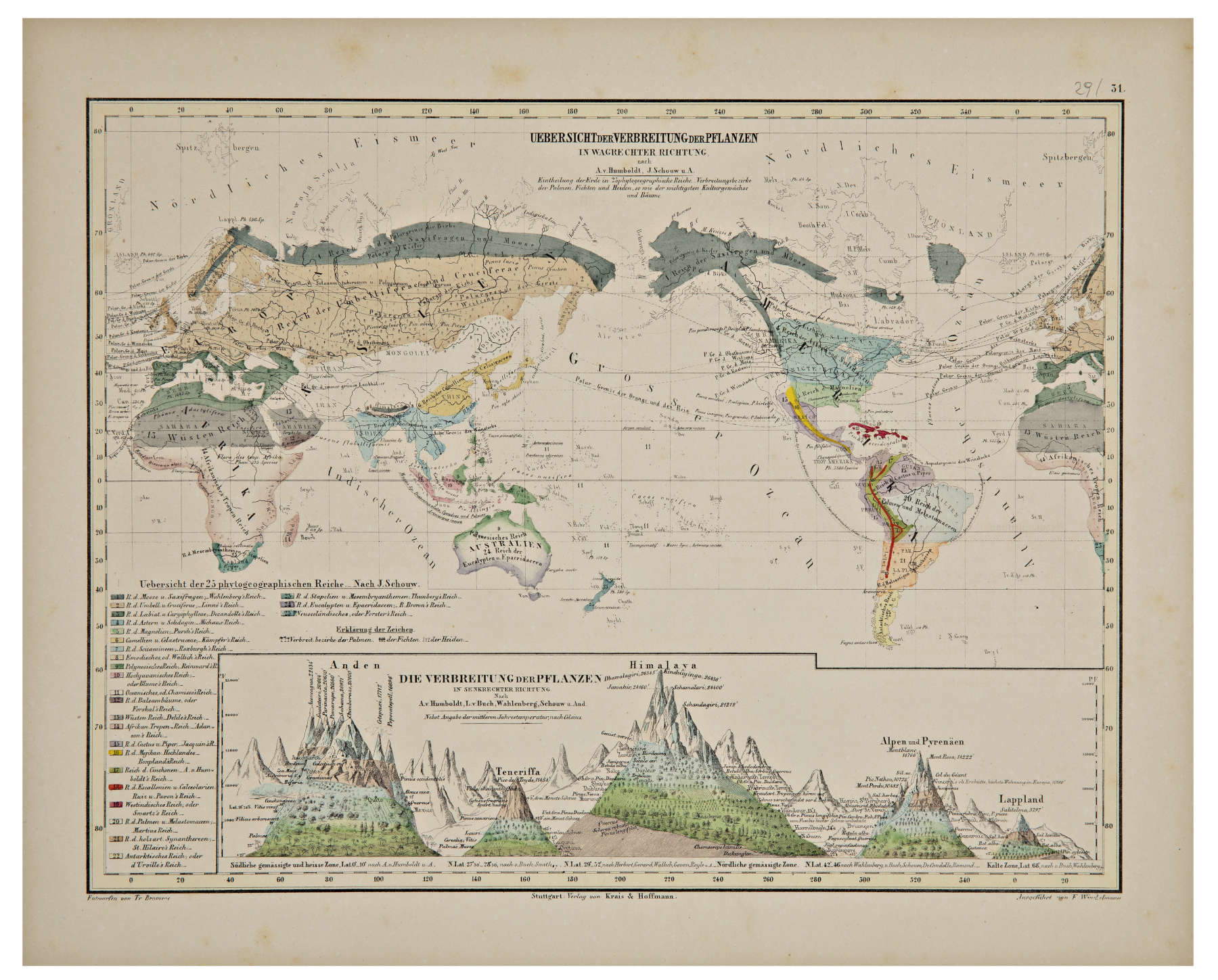The Scuderie del Castello di Miramare in Trieste is hosting the exhibition Kosmos - The Vessel of Knowledge, scheduled from December 21, 2023 until June 16, 2024. The exhibition is curated by Andreina Contessa and the Exhibitions Office of the Historical Museum of which Alice Cavinato, Fabio Tonzar, Daniela Craso, and the Miramare Castle Park are part.
The main theme of the exhibition is travel understood as the continuous human quest to go beyond one’s limits and push the boundaries of knowledge. The goal is to explore the unknown, pushing to the extremes of the globe, the depths of the sea, the immensity of the cosmos and the microcosm of subatomic particles. The exhibition is a tribute both to the expedition of the frigate Novara completed between 1857 and 1859 and to the historical period of the 19th century, a time of marvelous scientific exploration.
After a period of closure, the exhibition space at the Castle Stables has been reopened for this occasion with a novelty: an innovative layout featuring technological tools in order to tell today’s audiences how scientific knowledge was born. In order to fully immerse the visitor within the experience of the frigate Novara, the visual and sensory presentation emphasizes adventure and discovery through different areas such as: digital installations, scale models, dioramas, and artificial intelligence, thus creating an immersive experience that invites visitors to explore vast and unknown worlds The exhibition, in addition to highlighting the voyage that the frigate Novara made in exploring unknown areas of the Earth, features several scenic components and showcases never-before-seen artifacts and works exhibited in Trieste in 1860, upon the return of the expedition, in the Palazzo della Borsa. The exhibition includes more than 150 artifacts, including naturalistic items, historical navigational instruments, photographs, old books, paintings and watercolors.
“In the same years that Maximilian was building Miramare Castle and defining the botanical collection of his large garden,” explains Andreina Contessa, director of the Historical Museum and Park of Miramare Castle “He promoted science by supporting a network of knowledge and contacts among the scholars of the time.”
The plan for a round-the-world expedition with scientific and diplomatic purposes was advanced in 1856 by Archduke Ferdinand Maximilian of Habsburg, commander-in-chief of the Austrian navy. The aim of the expedition was to make a substantial contribution to the natural sciences through the collection of observations, measurements, data and findings for the scientific academies. The title of the exhibition is a tribute to German geographer and naturalist Alexander von Humboldt and his work Kosmos, published shortly before the frigate expedition departed. In his work, Humboldt theorized about the interconnectedness of all things, anticipating the modern concept of ecology.
“Alexander Von Humboldt,” Contessa continues, “theorized that all things were interconnected, which anticipates our concept of ecology. The exhibition is meant to frame the path that is always taken to discover the world. Indeed, every initiative and desire for discovery stems from an innate need for knowledge that humans have. To discover the world one must embark on a journey and, this journey, leads to other questions and, inevitably, to other cultures.”
Kosmos documents the relevance of data collection in constructing knowledge by examining contemporary travel and the continuing thirst for discovery. Through loans from leading Viennese museums and collaborations with institutions such as the University of Trieste and SISSA, the exhibition at the Miramare Castle Stables explores the magnificent experience of travel and the history of discovery, revealing the knowledge stored in libraries, collections and archives.
The exhibition is organized by Miramare Castle in collaboration with FIT - Fondazione Internazionale Trieste, Department of Humanities-University of Trieste, OGS - National Institute of Oceanography and Experimental Geophysics and SISSA - International School for Advanced Studies. Set up by Officina delle idee. The catalog is by Silvana Editoriale.

The frigate Novara, which departed from Trieste on April 30, 1857, embarked on a long expedition around the world, touching stops such as Gibraltar, Funchal, Brazil and the Cape of Good Hope. She then touched the islands of St. Paul, Amsterdam, Ceylon, India, Nicobar, Singapore, Java and Manila in the Philippines. During the summer of 1858, the frigate also reached Hong Kong and Shanghai, and then headed for Sydney in Australia and New Zealand. She also touched Tahiti and reached the coast of Chile (Valparaiso) in mid-April.
The exhibition is a tale not only of the transition from a philosophy intertwined with the natural sciences to the modern conception of science, but also of life aboard the brig. There is no shortage of scenic gimmicks and digital tools that open a window into life aboard the Novara and the daily routines of the sailors embarked. It delves into research aboard the frigate Novara, depicting the lives of researchers in their cabins, including ethnographers, zoologists, botanists and the painter Joseph Selleny (Vienna, 1824 - Inzersdorf, 1875). In the exhibit, original watercolors from the Albertina in Vienna and period objects from the Novara’s voyage are displayed.
A large panel illustrates the stages of the voyage, using the webcam to immerse visitors in contemporary life in the ports touched in the 19th century. Weapons from the recently restored Miramare Castle are also shown. During its travels, the expedition collected more than 26,000 zoological artifacts, including unique specimens such as the jumping penguin. The exhibition goes further than that in the more technological part, with images from the Euclid Space Telescope, computer simulations and polar exploration with the icebreaker Laura Bassi.

“The KOSMOS exhibition,” says Stefano Fantoni, president of the Trieste International Foundation for the Promotion and Freedom of Science, “is not only limited to documenting the scientific expedition of the Novara in its circumnavigation of the Globe in 1857-1859, but also aims to bear witness to the impetuous journey of science from the time of Darwin and Babbage to the present day toward an unpredictable future, as is always the case in the journey toward knowledge. This testimony unravels through the achievements of Physics, with the extraordinary development of fundamental theories (such as quantum mechanics and relativity) and the equally extraordinary development of particle accelerators from ADA to CERN, to the great evolution of knowledge about the constituents of the oceans and their impact on human life and vice versa-evidence of this is the great oceanographic data centers and the recent expedition of the ship Laura Bassi to the southernmost point on the globe ever reached. Not to forget astronomy, ”midwife of the sciences,“ as Henri Poincaré had it, and the observation of deep space in search of the solution to the mysteries of the Universe. All topped with the phenomenal development of ”data science,“ which beginning with Babbage’s visionary insight into a ”universal calculator“ and Alan Turing’s dreams of ”thinking machines capable of beating man“ led to the construction of modern supercomputers and the discovery of artificial intelligence. How wonderful!!! And of all this the Trieste of science occupies a fundamental place in the world with its universities and research institutes.”
“The exhibition,” explains Roberto Trotta, professor of theoretical physics and head of data science at SISSA, “opens and closes with two immersive experiences in the contemporary research landscape, inspired by the common thread of collecting and analyzing data concerning the cosmos around us, already evident in the Novara journey. In the first room, the audience will experience five centuries of scientific discoveries and explorations in the span of five minutes, in a dreamlike video created through generative artificial intelligence by artist and videomaker Gigi Funcis, with scientific advice from Prof. Roberto Trotta of SISSA. The video not only transports the viewer through time and space, but also highlights the creative and imaginative power achieved by artificial intelligence. The last room offers some examples of how cutting-edge scientific research makes use of increasingly complex and growing data that can only be analyzed and understood through statistical and artificial intelligence techniques. In a spectacular infinity room that reproduces the dizzying sensation of a boundless universe, visitors find themselves immersed in the Euclid Space Telescope’s observations of the cosmos; experience the world of the infinitely small at CERN in Geneva; and accompany the icebreaker Laura Bassi on an Arctic exploration voyage. The room was set up with scientific advice from SISSA, the Trieste Observatory, INFN and OGS, with musical input from Gigi Funcis.”
“Those who design temporary installations,” says Diego Giacchello, administrator of Officina delle idee, “are aware of the short time in which their design will find a built form and how just as quickly it will be disassembled and disposed of. The testimonies that will survive will basically be the visitors’ experiences and the digital images they will have collected with their smartphones. Photographs and short videos will be preserved, perhaps forever, in reliable data centers scattered here and there across the planet. We, too, working on the exhibit produced thousands of snapshots. We exchanged them for a question, a confrontation, a confirmation, while in a few days that exhibition route thought up in the summer months was taking shape. But it is within us that we will jealously hold the value of this little adventure made of a perfect understanding between people who worked together for the first time and who understood each other immediately, united by the goal of best illustrating the contents from the exhibition. There are many scenic components to this exhibition design, an exhibition that is above all a narrative and not just an orderly sequence of works and artifacts, while exceptional, left alone in the icy context of the Scuderie. For this reason, when everything is disassembled and we observe the empty rooms, we are certain that a kind of subtle melancholy will remain within us, the kind that marks the end of every journey.”
 |
| Kosmos: an exhibition on the frigate Novara in Trieste's Miramare Stables |
Warning: the translation into English of the original Italian article was created using automatic tools. We undertake to review all articles, but we do not guarantee the total absence of inaccuracies in the translation due to the program. You can find the original by clicking on the ITA button. If you find any mistake,please contact us.